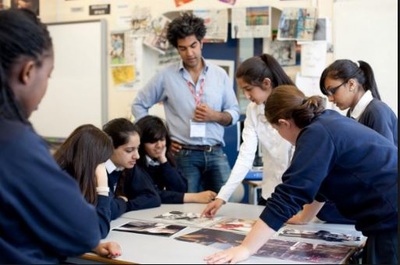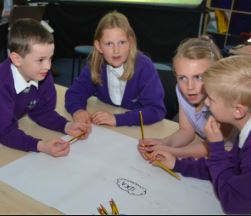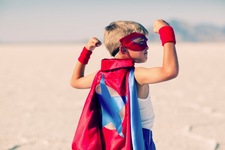Group, Collaborative and Cooperative
Learning Spaces
Although group, collaborative and cooperative learning all have different structures and ways of being carried out, they all have one distinguishing feature in common and that is that they allow for two or more students to work together (Killen, 2014). I would suggest that currently, we have all incorporated learning spaces within our classroom that allow for some form of group work. The question is though, are we using these learning spaces to their full potential? To answer this question we must familiarise ourselves with the practical and theoretical components of each space?
Group Learning-Group learning in the classroom involves students working in partners or in small groups. It relies heavily on student input and requires students to connect with other learners around them and work together on a task.
Collaborative Learning- sees students or students and teachers actively engaging in a task initiating questions, addressing complex issues and resolving problems. Here students are part of a community of practice, sharing a common goal that requires collaborative dialogue in order to construct solutions.
Cooperative Learning- Cooperative learning is a more formalised extension of group work and is considered by many educators and theorists as a far more effective way for students to learn. It is an instructional strategy in which students work together on a given task to achieve a common goal. It requires Teachers to carefully plan and monitor learning. This includes the appropriate selection of groups with consideration of gender and academic ability. Cooperative groups focus on learning to learn and the development of cognitive and social skills and emphasises how the success of individuals depends on the success of all group members.
The physical learning space
The main reason for using group, collaborative and cooperative learning is to enable students to share ideas, develop understandings on content and debate issues in order meet a particular learning outcome. It is therefore essential that groups and physical spaces be arranged to allow students to concentrate on learning and for easy communication. Adequate open spaces and flexible furniture will help in accommodating group work.
Strengths and challenges of the Group, Collaborative and Cooperative Learning Space
(Killen, 2014)
Approaches, Strategies and Resources
|
|
Things to think about
Is group work effective? Should it be more structured? Is cooperative learning the answer? |
|
Tips for Grading Cooperative Learning Lessons
Grading team projects can present many challenges for Teachers. Often roles can be assigned when students complete a project and subsequently each student is graded based on their part in the project. If however the project is too complex to be broken into separate parts a 'Team Project Evaluation Form' can be utilised. Here you will find a brief description on how to use this form as well as a printable version. |
|
What is required for effective implementation?
According to findings by Nath, Ross & Smith (1996) in ‘A Case Study of Implementing a Cooperative Learning Program in an Inner-City School’, there are 5 things that need to happen in order to ensure the effective implementation of cooperative learning models. These include:
|
|
|
Professional Development
Kagan Cooperative Learning Australia provides professional development workshops for teachers. "The Kagan Structures are easy to learn and implement, fun for teachers and students, and produce profoundly positive outcomes along a remarkable number of dimensions. Different structures are designed for different outcomes, including enhanced mastery of subject matter, improved thinking skills, teambuilding, class building, development of social character and social skills, communication skills, classroom management, classroom discipline, development and engagement of each of the multiple intelligences. " (Kagan Australia, 2016) |












